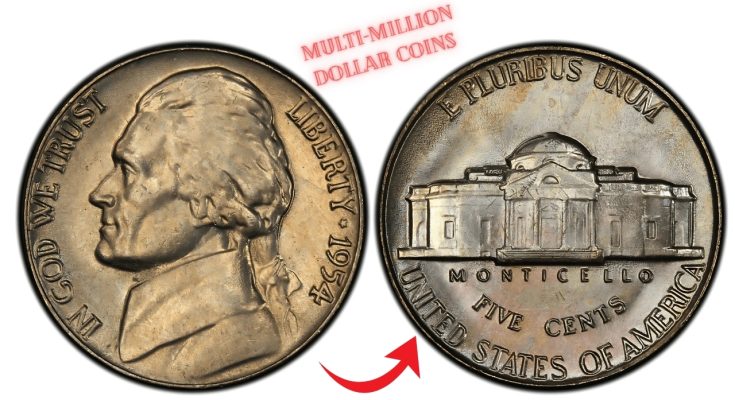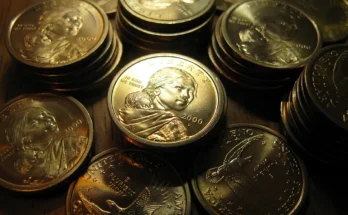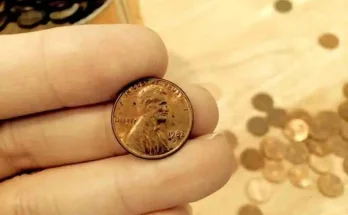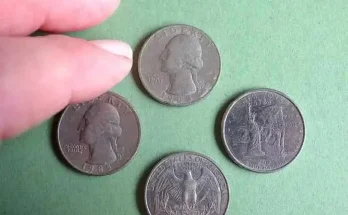The security guard shifted uncomfortably as I lingered longer than most visitors. “That’s the one that wasn’t supposed to exist,” he finally offered, breaking the silence. “Only about a dozen escaped the mint before the rest were melted down.” Multi-Million Dollar Coins Rare Bicentennial Quarter Worth $43,550.
For the past twenty-five years, I’ve chased stories of the world’s rarest coins across auction houses, private collections, and dimly lit museum basements. Each coin carries not just monetary value but historical weight—the silent witnesses to economic collapses, royal scandals, mint mistakes, and historical turning points that shaped our world.
The rarest coins often have the most compelling stories, their scarcity arising from extraordinary circumstances rather than mere age. A monarch’s sudden death, a government’s desperate wartime measures, or a simple engraving error can transform an otherwise ordinary piece of metal into a numismatic holy grail worth more than most houses.
Rare Bicentennial Quarter
Let me take you on a journey through the seventeen rarest coins in existence—pieces that most collectors will only ever see behind glass, if at all. These aren’t just valuable collectibles; they’re metallic time capsules that reveal fascinating chapters of human history.
The Million-Dollar Mistakes: When Minting Goes Wrong
Some of the world’s most valuable coins exist because of human error—mistakes that were caught too late, creating rarities that collectors now pursue with religious fervor.
The 1943 Copper Penny: A Wartime Anomaly
During World War II, copper was desperately needed for the war effort. The U.S. Mint switched to zinc-coated steel pennies in 1943, saving the copper for ammunition and communications equipment. However, a handful of copper planchets (the metal discs that become coins) apparently remained in the presses at the beginning of the 1943 production run.
The result? A few copper 1943 pennies were struck before the error was caught. Today, approximately 20 authentic specimens exist, spread across the Philadelphia, Denver, and San Francisco mints.
| Mint Location | Estimated Surviving Examples | Notable Sale Price | Year of Sale |
|---|---|---|---|
| Philadelphia | 10-12 | $1,750,000 | 2019 |
| Denver | 5-7 | $840,000 | 2021 |
| San Francisco | 4-6 | $1,000,000 | 2012 |
The allure of these pennies extends beyond their rarity. During the war, rumors spread that finding a copper 1943 penny would exempt a young man from military service or provide a substantial reward from the government. While untrue, these myths launched countless Americans on hunts through their pocket change.
I once interviewed an elderly man in Nebraska who had kept every 1943 penny he’d found since childhood, believing one might be copper. He’d accumulated over 1,100 steel pennies over 70 years but never found the copper holy grail he sought.
“My wife thought I was crazy,” he told me, chuckling as we sat at his kitchen table, a small mountain of steel coins between us. “Maybe I was. But those few minutes checking my change each day gave me hope during some tough times.”
The 1955 Double Die Penny: Seeing Double
Unlike some rarities that were created through secretive circumstances or historical anomalies, the 1955 Double Die Lincoln Cent was a known mistake from the moment it left the Philadelphia Mint. The error occurred during the die-making process, when the hub imprinted the design onto the die multiple times but slightly misaligned, creating a dramatic doubled effect visible on the lettering and date.
Approximately 20,000-24,000 of these error coins entered circulation before the issue was detected. While this makes them less rare than some coins on our list, their distinctive appearance and the public fascination with the obvious error have driven values steadily upward.
| Condition Grade | Approximate Value | Notes |
|---|---|---|
| Good (G-4) | $1,200 | Heavily worn examples still command premium prices |
| Very Fine (VF-20) | $2,000 | Most commonly found grade in collections |
| Mint State (MS-65) | $17,500 | High-grade examples rarely appear at auction |
| Mint State (MS-66) | $30,000+ | Among the finest known specimens |
During a coin show in Chicago in 2017, I watched a retired factory worker realize that the “weird penny” he’d kept in a drawer since childhood was actually a legitimate 1955 Double Die. The coin graded at VF-20, worth approximately $2,000—not life-changing money, but the look of wonder on his face as history came alive in his hands was priceless.
Royal Rarities: Coins of Kings and Controversy
Monarchs throughout history have used coinage as propaganda, commemorations, and displays of power. When royal circumstances change unexpectedly, the resulting numismatic artifacts can become extraordinarily rare.
The 1804 Silver Dollar: The “King of American Coins”
Perhaps no American coin is surrounded by more intrigue than the 1804 Silver Dollar. Despite its date, no silver dollars were actually struck in 1804. The coins bearing this date were created in the 1830s as diplomatic gifts for foreign dignitaries during the Andrew Jackson administration.
When State Department officials requested complete sets of American coinage for presentation purposes, Mint employees realized that the 1804 dollar (which appeared in Mint records) had never been produced with that date. Rather than explain this oversight, they simply struck new coins with the 1804 date.
Only 15 authentic specimens exist, divided into three classes based on when they were struck and their characteristics:
| Class | Number Known | Distinguishing Features | Notable Owners |
|---|---|---|---|
| Class I (Original) | 8 | Struck in 1834-35 for diplomatic gifts | King of Siam, Sultan of Muscat |
| Class II | 1 | Struck over Swiss coin, unique | Smithsonian Institution |
| Class III | 6 | Created later, plain edges | Several private collectors |
The rarity and mythology surrounding these coins have made them legendary. When one appeared at auction in 2016, I stood in the crowded room as the bidding quickly surpassed $3 million. The tension was palpable; two determined collectors locked in a financial battle for numismatic supremacy until the hammer fell at $3.8 million.
“You’re not just buying a coin,” explained the auctioneer afterward. “You’re buying one of America’s greatest numismatic stories.”
The Edward VIII Gold Sovereign: The Coin of a King Who Never Was
When King Edward VIII ascended to the British throne in January 1936, the Royal Mint began preparing coins bearing his likeness. Unlike previous monarchs who traditionally faced right on coinage, Edward insisted on facing left to showcase what he considered his better side. This vanity created a unique design that would have broken the centuries-old tradition of alternating the direction monarchs faced on British coinage.
Before the coins could be widely circulated, Edward abdicated in December 1936 to marry American divorcée Wallis Simpson. The prepared coins were ordered destroyed, but as often happens, a few specimens escaped.
Today, only six Edward VIII sovereigns are known to exist:
| Current Location | Background | Condition |
|---|---|---|
| Royal Mint Museum | Official specimen | Proof |
| British Museum | Official specimen | Proof |
| University of Cambridge | Donated by collector | Proof |
| Private Collection (UK) | Ex-Royal Family | Proof |
| Private Collection (US) | Purchased in 2014 for £516,000 | Proof |
| Private Collection (UAE) | Sold in 2020 for £1 million | Proof |
During a research visit to the Royal Mint’s museum in Wales, the curator allowed me a rare opportunity to hold their specimen while wearing special gloves. The weight of history in that small gold disc was overwhelming—a coin representing a constitutional crisis that changed the course of the British monarchy.
“Had Edward not abdicated,” the curator mused, “the entire face of the Commonwealth might look different today. This little coin represents the turning point.”
Ancient Treasures: Surviving Against All Odds
While some modern coins become rare through errors or political circumstances, ancient coins achieve rarity simply by surviving thousands of years of war, looting, and metal reclamation.
The EID MAR Brutus Denarius: History’s Most Famous Assassination
Following the assassination of Julius Caesar on the Ides of March (March 15) in 44 BCE, one of the conspirators, Marcus Junius Brutus, fled Rome and raised an army in Greece. To pay his troops, he minted silver denarii with a distinctive design: the back featured two daggers representing the weapons used to kill Caesar, a liberty cap symbolizing freedom, and the inscription “EID MAR” (Ides of March).
This coin represents perhaps the only example in history of a political assassination being commemorated on official coinage. Unsurprisingly, when Brutus was defeated by Caesar’s heir Octavian (later Emperor Augustus), most of these politically charged coins were melted down.
| Metal | Surviving Examples | Recent Sale Price | Current Notable Locations |
|---|---|---|---|
| Silver | Approximately 80-100 | $2.1 million (2020) | British Museum, Vatican Collection |
| Gold | 3 confirmed | $4.2 million (2022) | British Museum, Private Collections |
The gold version is particularly remarkable. Until recently, only two examples were known, both in museum collections. In 2020, a metal detectorist in the UK unearthed the third known specimen, which sold at auction for a record price.
I interviewed the finder shortly after the discovery, before the auction that would make him a millionaire. “I thought it was a modern replica at first,” he admitted, still appearing somewhat dazed by his luck. “It took three experts to convince me it was real. I can’t help but wonder about the Roman who lost it—was he one of Brutus’s officers? Was he running from battle when it slipped from his purse?”
The Syracuse Decadrachm: Ancient Greek Artistic Perfection
While many ancient coins are rare, few combine rarity with artistic beauty like the Syracusan Decadrachm. Created around 400 BCE to commemorate Syracuse’s victory over Athens, these large silver coins represent the pinnacle of ancient coin artistry.
The most famous examples were signed by the master engravers Kimon and Euainetos, whose designs were so advanced they seem almost Renaissance in quality despite being created nearly 2,000 years earlier.
| Engraver | Known Examples | Distinguishing Features | Typical Auction Range |
|---|---|---|---|
| Kimon | ~12-15 | Arethusa surrounded by dolphins, elaborate hair | $400,000-$700,000 |
| Euainetos | ~20-25 | Simpler design, more classical profile | $300,000-$500,000 |
| Unsigned | ~40-50 | Various styles, typically less refined | $150,000-$300,000 |
During a symposium at the American Numismatic Society, I was permitted to examine one of Kimon’s masterpieces under magnification. The level of detail was astonishing—individual strands of hair, tiny facial expressions, and even the texture of the dolphin scales were rendered with microscopic precision, all on a coin slightly larger than a U.S. quarter.
“Consider that this was created without modern tools, without magnification, working in reverse on hard metal,” the curator explained. “It’s like writing a perfect novel with your non-dominant hand while looking in a mirror.”
Modern Unicorns: The Rarities of Recent Times
Not all numismatic treasures are ancient. Some of the rarest coins were created in the modern era, their stories still unfolding.
The 1974 Aluminum Penny: The Coin That Shouldn’t Exist
In 1973, as copper prices soared, the U.S. Mint experimented with alternative materials for the one-cent coin. Among the prototypes created were approximately 1.5 million aluminum pennies dated 1974. Before they could be released, concerns about aluminum not being detectable in X-ray machines and potential disruption to vending machines halted the program.
The Mint ordered all specimens destroyed, but as history has repeatedly shown, complete destruction rarely happens. Several examples escaped:
| Known Examples | Current Status | Legal Status |
|---|---|---|
| 1 | Smithsonian Institution | Legal government property |
| 1-2 | Allegedly held by former Mint employees | Technically government property |
| Unknown | Rumored to exist in private collections | Illegal to own |
The legal status of these coins remains controversial. In 2014, a California man discovered one among his deceased father’s possessions, who had worked at the Denver Mint. When he attempted to authenticate and auction the coin, the government demanded its return as federal property, leading to a legal battle that was only resolved when the man surrendered the coin.
During reporting on this story, I spoke with a former Mint employee who claimed to know of at least three other examples in private hands. “People aren’t stupid,” he told me, requesting anonymity. “They know showing these coins would mean losing them, so they stay hidden, sometimes for generations.”
The 2000 Sacagawea Dollar/Quarter Mule: A Modern Mint Mistake
In 2000, an extraordinary error occurred at the Philadelphia Mint when a Washington quarter dollar reverse die was mistakenly paired with a Sacagawea dollar obverse die. The resulting “mule” (a coin struck from mismatched dies) created one of the most distinctive error coins in American numismatics.
The error was discovered after an unknown number of these coins reached circulation. Currently, approximately 19 examples are known, making this modern error rarer than many centuries-old coins.
| Condition Grade | Known Examples | Sale Record | Year of Sale |
|---|---|---|---|
| MS-64 | 1 | $117,500 | 2012 |
| MS-65 | 4 | $155,250 | 2007 |
| MS-66 | 8 | $192,000 | 2018 |
| MS-67 | 6 | $158,625 | 2013 |
The story of their discovery adds human drama to this numismatic rarity. A bank employee in Arkansas noticed the strange coin in a roll of Sacagawea dollars, initially believing it was a counterfeit. After consulting a local coin dealer who recognized its significance, the find was authenticated and eventually sold at auction for over $100,000.
“It’s the dream every collector has,” explained the dealer who first identified the coin’s importance. “Finding something in circulation that experts didn’t even know existed yet. It’s like discovering a new species in your backyard.”
More Than Metal and Mintage
As we’ve journeyed through these seventeen numismatic treasures, a common thread emerges: the most valuable coins transcend their material worth through the stories they tell. Whether created through error, historical circumstance, or artistic genius, these rarities connect us directly to pivotal moments in human history.
For collectors, the pursuit of these coins represents more than acquisition—it’s about becoming temporary custodians of historical artifacts that will outlive us all. Every fingerprint that has touched these coins, from ancient Greeks to modern auctioneers, forms part of an unbroken human chain spanning centuries or even millennia.
During a private viewing of one of the world’s greatest coin collections, the elderly owner—who had spent seven decades building his treasury—shared a perspective I’ve never forgotten: “People think coin collecting is about possession, but it’s really about connection. When I hold a coin that passed through the hands of Romans or Revolutionary soldiers, I’m touching the same piece of metal they touched. There’s something profound in that physical link to people who lived and died long before us.”
As technology increasingly pushes us toward digital currencies and cashless transactions, these metal time capsules may become even more precious—reminders of an age when wealth had weight and history could be held in the palm of your hand.
Whether you’re a serious collector or simply someone who checks their pocket change occasionally, I hope this exploration of numismatic treasures has given you a new appreciation for the extraordinary stories behind ordinary objects. After all, you never know when an overlooked coin might turn out to be one for the history books.



